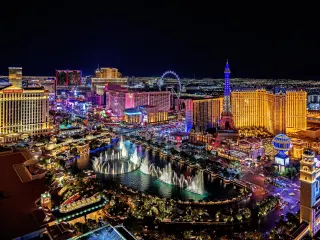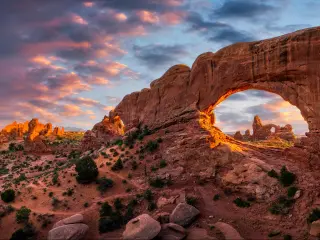An Epic Denver to Las Vegas Road Trip
From the outdoorsy city of Denver to the dazzling lights of Las Vegas, this road trip will take you past majestic mountains to vast deserts, with opportunities to explore some of Utah's Mighty 5, historic cities, ancient pueblo culture and vibrant New Mexico markets.
You can do this 810-mile road trip in 12 hours. The sights on the way are Vail, Glenwood Springs, Moab, Arches National Park, Canyonlands National Park, Cedar City, Dixie National Forest, Zion National Park, Moapa Valley, and Mystic Hot Springs.
If you love nature, cultural attractions, and plenty of outdoor adventures, then this drive from Denver to Las Vegas is for you. Read on below to learn more about our recommended routes, where to stay, the best time to travel, and the best things to see and do on the way.
Where is Las Vegas and how far is a road trip from Denver?
The road trip from Denver to Las Vegas will take you through America's vast Western landscapes. You'll have two fantastic routes to choose from: the Zion National Park Route or the Grand Canyon Route.
On the Zion National Park Route, you'll get to admire mountain vistas, desert landscapes, and majestic national parks.
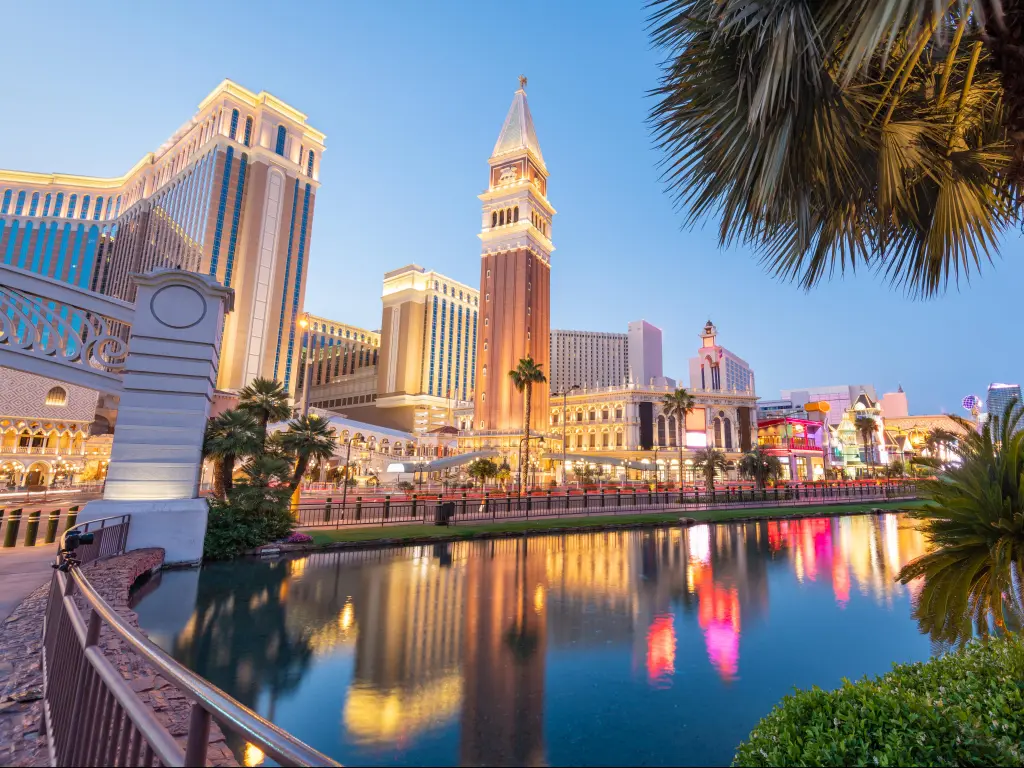
This route will take you through charming Colorado towns like Idaho Springs and Vail, the natural arches and red rock formations of Moab, and the towering cliffs of Zion National Park, before reaching fabulous Las Vegas.
Covering a distance of 810 miles, you can enjoy it easily over 4 to 5 days. This way, you'll get to soak up all the national parks, cultural destinations, and sights along the way.
The Grand Canyon Route is also dotted with awe-inspiring landmarks and natural wonders. This path winds through the artistic hubs of Taos and Santa Fe, then through the historic streets of Albuquerque, and to the awe-inspiring Grand Canyon National Park.
Along the way, you can visit the Petrified Forest National Park and the engineering marvel of the Hoover Dam. Spanning 1,115 miles and best enjoyed over 6 to 7 days, this route is perfect if you want a blend of American history and spectacular landscapes.
How long is the road trip from Denver to Las Vegas, and how many days will it take?
| Route | Distance | Driving Time | Recommended Days |
|---|---|---|---|
| Zion National Park Route | 810 miles | 12 hours | 4-5 Days |
| Grand Canyon Route | 1,115 miles | 17 hours 30 minutes | 6-7 Days |
What is the best road trip route from Denver to Las Vegas?
The best road trip route from Denver to Las Vegas will depend on what you'd like to see and how much time you have. That being said, this is how our two routes stack up against each other, looking at some factors that might influence your decision.
| Zion National Park Route | Grand Canyon Route | |
|---|---|---|
| Easy Driving | ⭐️⭐️⭐️⭐️ | ⭐️⭐️⭐️⭐️ |
| Scenery | ⭐️⭐️⭐️⭐️⭐️ | ⭐️⭐️⭐️⭐️⭐️ |
| Facilities | ⭐️⭐️⭐️ | ⭐️⭐️⭐️⭐️ |
| Things to do | ⭐️⭐️⭐️⭐️⭐️ | ⭐️⭐️⭐️⭐️⭐️ |
| Traffic Flow | ⭐️⭐️⭐️ | ⭐️⭐️⭐️ |
Driving from Denver to Las Vegas via Zion National Park
The Zion National Park Route from Denver to Las Vegas, takes you through the heart of the American West's most stunning landscapes.
You'll mostly drive on well-maintained interstate highways and major state routes, making your drive as smooth as can be. Despite the potential for challenging conditions through mountain passes or during bad weather, the route remains accessible.
As you drive, you'll see ever-changing and breathtaking scenery. You'll see the majestic mountains of Colorado, the desert landscapes of Utah, and national parks like Arches, Canyonlands, and Zion.
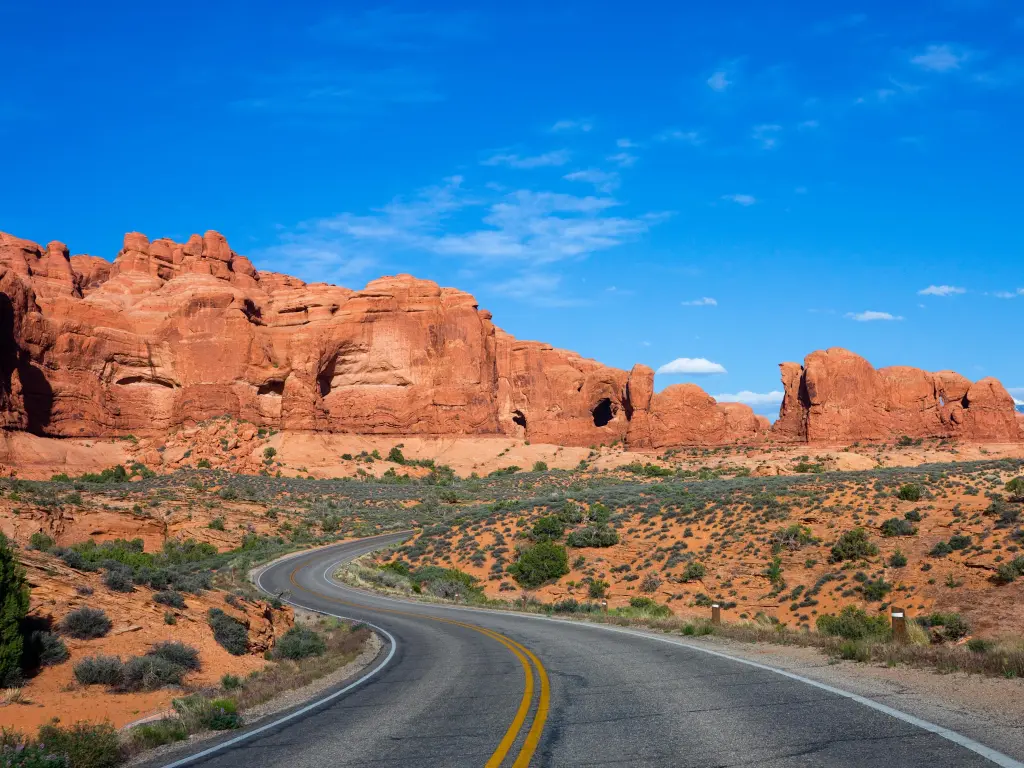
If you're seeking adventure and natural beauty, the Zion National Park Route is unmatched, offering an abundance of outdoor recreational activities and sightseeing opportunities.
While the route has plenty of facilities in urban areas and towns along the interstate, it's wise to plan ahead when entering more remote regions or national parks. Make sure to have sufficient supplies and arrange your accommodations in advance.
Traffic remains smooth across most of the journey, with occasional increases during peak travel seasons or holiday weekends, particularly near major tourist destinations and national parks.
Driving from Denver to Las Vegas via Grand Canyon
Setting off on the Grand Canyon Route, you'll drive through the heart of the American Southwest, a region rich in natural wonders, cultural heritage, and breathtaking landscapes.
These well-maintained roads guide you through ever-changing scenery, from the towering Rocky Mountains to the colorful desert plains of New Mexico, before reaching the Grand Canyon.
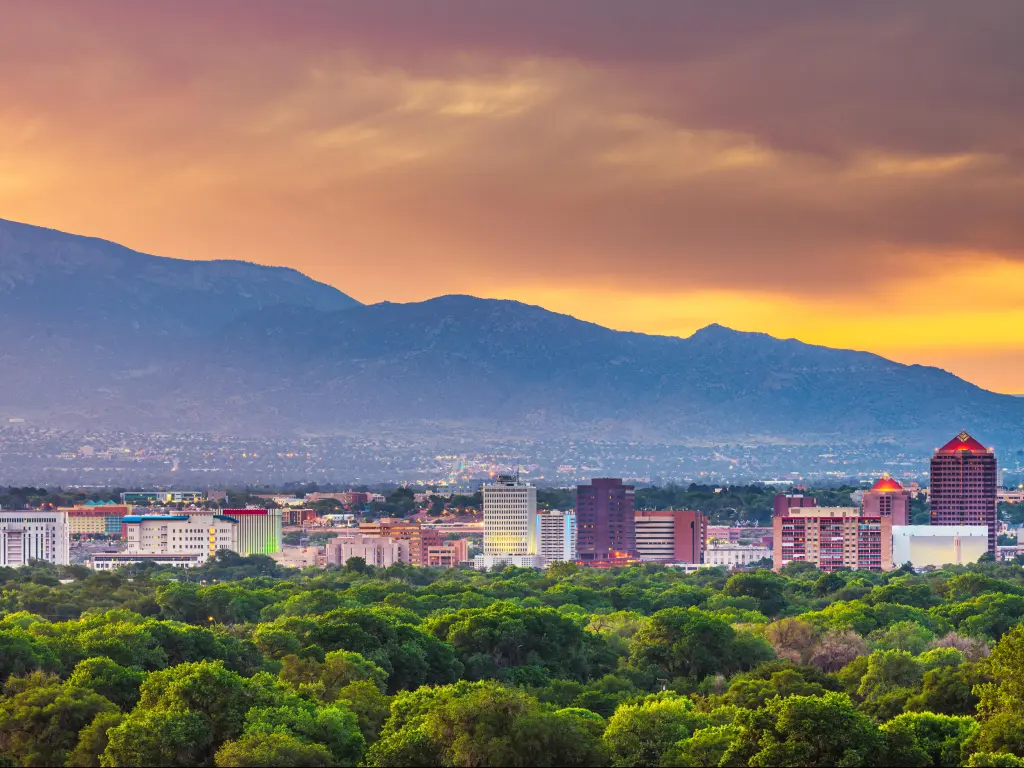
From the moment you leave Denver, the route follows along major highways and interstates, making your drive easy and secure. On the way, you'll have plenty of facilities in major cities and smaller towns, ensuring that you have access to gas, food, and lodging.
From the outdoor adventures awaiting in national parks to the rich history of Santa Fe and Taos, there's something for everyone.
Traffic flow on this route is generally smooth, especially in rural and desert areas, but be prepared for potential congestion in and around major cities and tourist destinations like the Grand Canyon and Las Vegas.
Driving Route from Denver to Las Vegas
Below are more driving details about each route between Denver and Las Vegas. It is always a good idea to consult GPS for step-by-step route directions.
Driving the Zion National Park Route
Begin your journey from Denver by traveling west along Interstate 70 (I-70). You'll soon pass through the scenic Idaho Springs and Vail.
Continue on the interstate, enjoying the picturesque views of Glenwood Springs and the vineyards near Palisade. After you cross into Utah, veer south towards Moab, the gateway to Arches National Park, one of the most stunning natural landmarks in the country.
Then check out the landscapes of Canyonlands National Park. These parks offer a glimpse into Utah's rugged beauty and geological wonders. After your visit, get back on the interstate.
Merge onto I-15 and proceed south towards Cedar City. Your next destination is Zion National Park, known for its steep red cliffs and landscapes.
After exploring Zion, continue on I-15 South through St George, and into Nevada near Mesquite. From here, follow the road through the Moapa Valley, an area known for its stark desert landscapes and the Valley of Fire State Park nearby before arriving in Las Vegas.
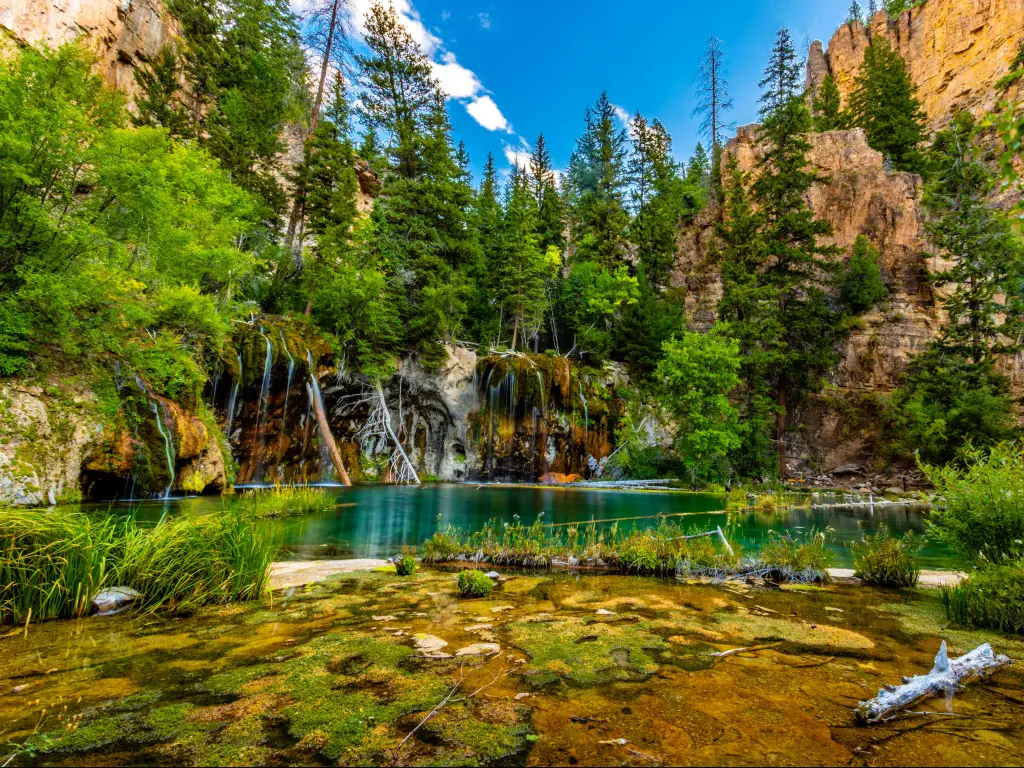
Driving the Grand Canyon Route
Starting from Denver, head south along I-25, passing through Colorado Springs and Pueblo. Continue towards the artistic town of Taos, New Mexico. From Taos, drive south to Santa Fe and enjoy its rich cultural heritage, food scene, and historic Adobe architecture.
From here, proceed along I-25 to Albuquerque. Heading west from Albuquerque on I-40, you'll pass through Gallup, with its rich Native American history, and enter the diverse landscapes of Arizona.
You'll then drive through Petrified Forest National Park, before stopping in Holbrook and Winslow, before reaching Flagstaff.
A detour north of Flagstaff leads you to the Grand Canyon National Park, one of the seven natural wonders of the world. Marvel at its vast, awe-inspiring vistas before heading back to I-40.
Continue west through Seligman, a historic Route 66 town, and Kingman, where the spirit of the "Mother Road" is still alive. Approach the Nevada border by passing through the engineering marvel of the Hoover Dam. Finally, you'll end your drive in Las Vegas.
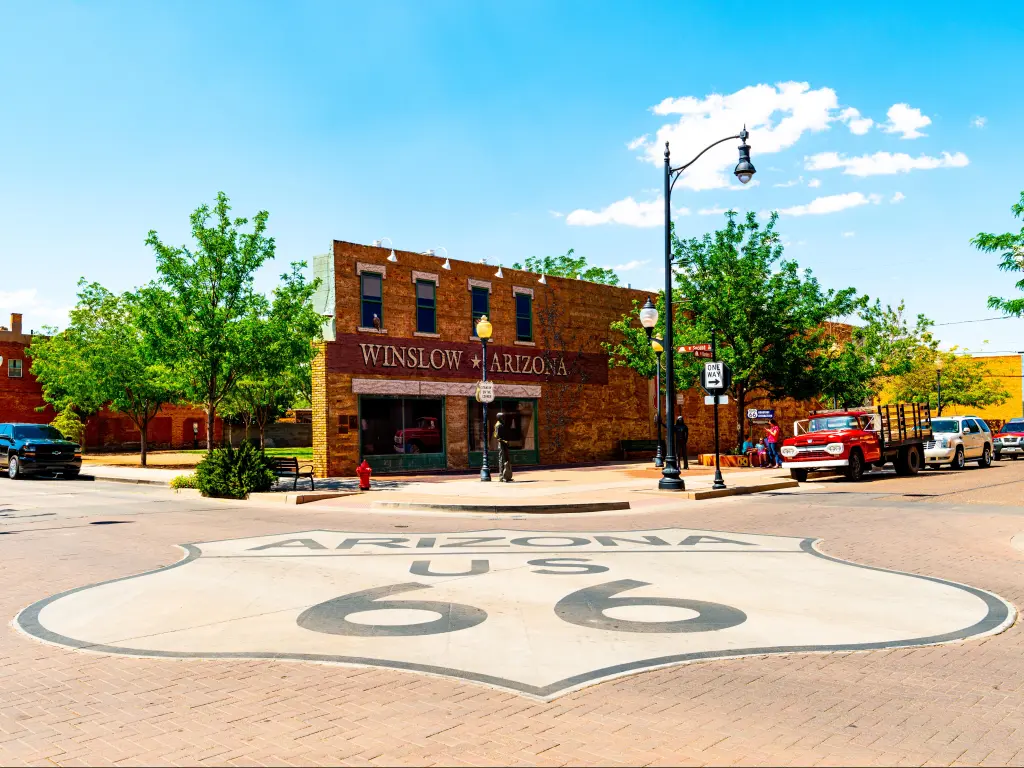
Where to stop overnight on a road trip between Denver and Las Vegas
There's so much to see and do along the way on a road trip from Denver to Las Vegas that you'll want to break your drive up. Below are our top destinations for an exciting overnight stop.
At the doorstep of Zion National Park in St George
As you journey along the Zion National Park Route, a must-stop destination is the picturesque city of St George, located just about 2 hours from Las Vegas. Surrounded by red sandstone cliffs and boasting a mild climate, the city serves as a gateway to Zion National Park, making it a perfect place for hiking and enjoying nature.
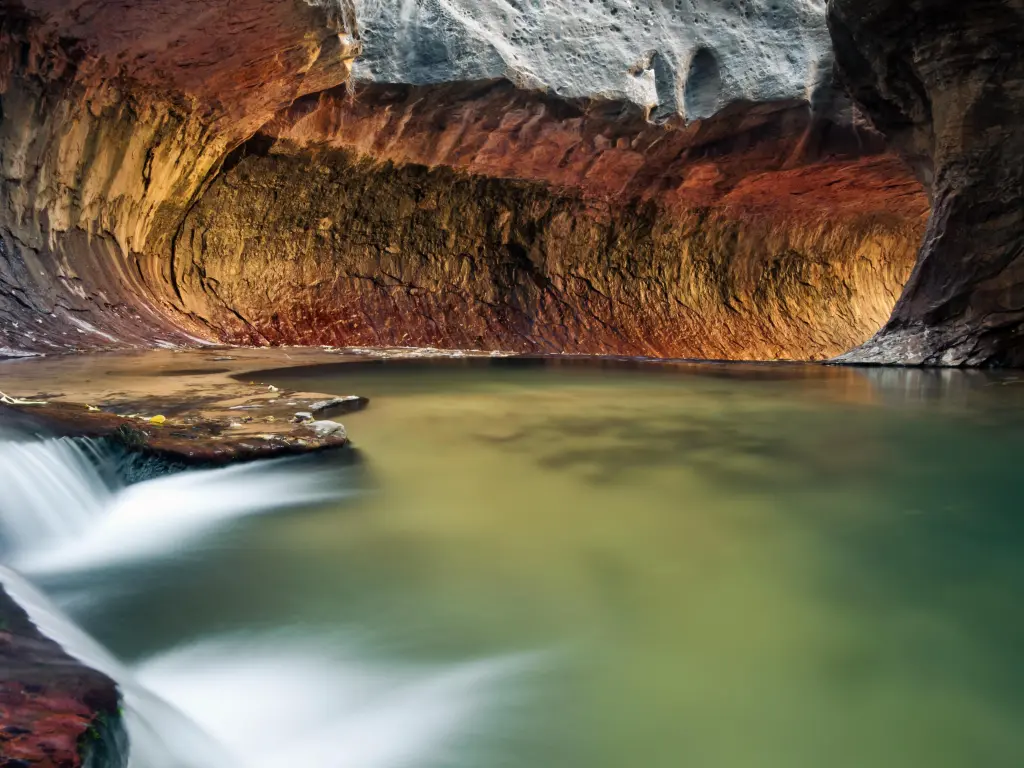
In St George, there's no shortage of attractions to fill your itinerary. In addition to Zion National Park, one of our favorite places to spend some time in the great outdoors while in St George is Snow Canyon State Park, where you can hike among stunning canyons and see lava flows.
For your stay in St George, the Inn on the Cliff is an exceptional choice. The Inn on the Cliff has plenty of views of the stunning cliffside and beautiful desert landscape, providing a serene and picturesque setting that's hard to match.
If you love golf, you'll appreciate the Golf Course at the Ledges nearby. Zion National Park is a mere 1 hour and 20 minutes drive from the hotel, offering iconic hikes and breathtaking vistas.
Before you set off on your day, make sure to enjoy the delicious breakfast served here. Or you can make a relaxing day out of it and enjoy the seasonal outdoor pool and a hot tub to unwind and soak in the stunning panoramic views.
Majestic sights and outdoor adventures in Flagstaff
Flagstaff, Arizona, is the perfect stopover on the Grand Canyon Route, located 3 hours and 40 minutes from Las Vegas. This historic mountain city is nestled in the ponderosa pines and serves as a recreational hub, offering access to some of Northern Arizona's most significant attractions.
This beautiful city is among the best gateways to the majestic Grand Canyon National Park. If you have more time, you can stay an extra day or two and explore the national park at your own pace.
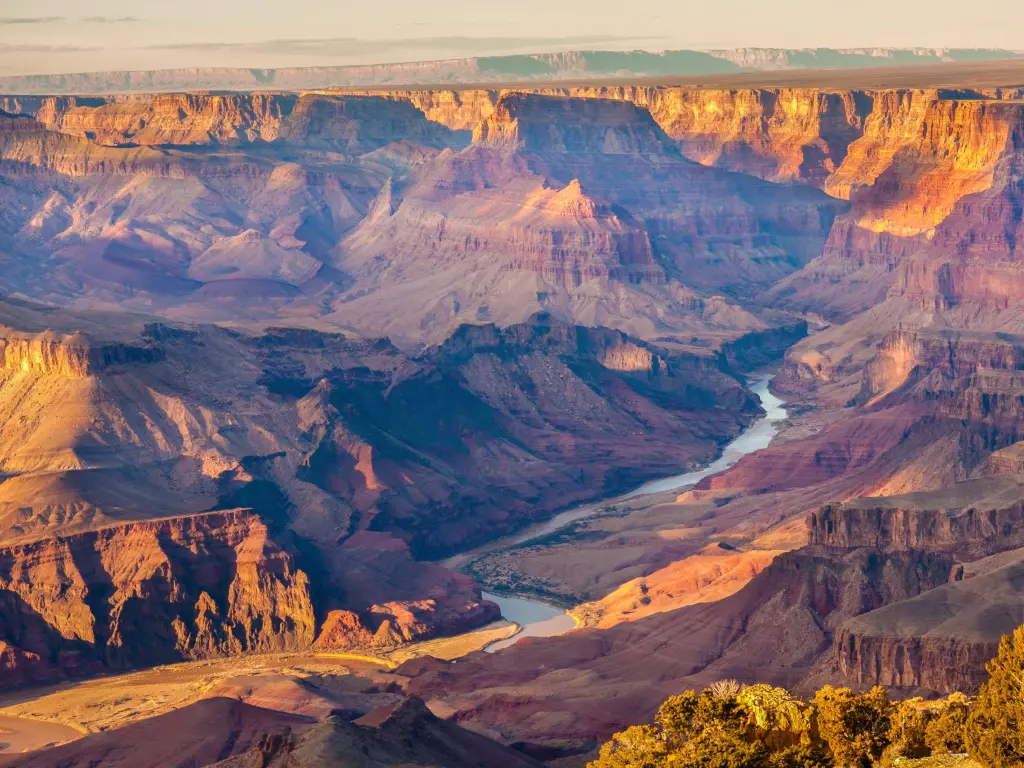
While here, you can also visit the Riordan Mansion State Historic Park to learn about the area's early timber industry. On top of that, the Lowell Observatory is a must-visit to learn about the scientific achievements of the area.
For your stay in Flagstaff, the highly-rated Little America Hotel Flagstaff promises an unparalleled experience. This sophisticated retreat blends comfort with elegance.
The on-site Silver Pine Restaurant and Bar caters to all tastes with its excellent menu, which is available throughout the day. After your long drive, you'll love relaxing in the outdoor pool or the hot tub.
The Little America Hotel is close to all of Flagstaff's major attractions. Plus, you're only a short drive away from the city's top-rated restaurants.
Our favorite place to stay in Las Vegas
When you reach Las Vegas, we recommend staying at the luxurious Venetian Resort, a masterpiece of Italian elegance in the heart of the Las Vegas Strip.
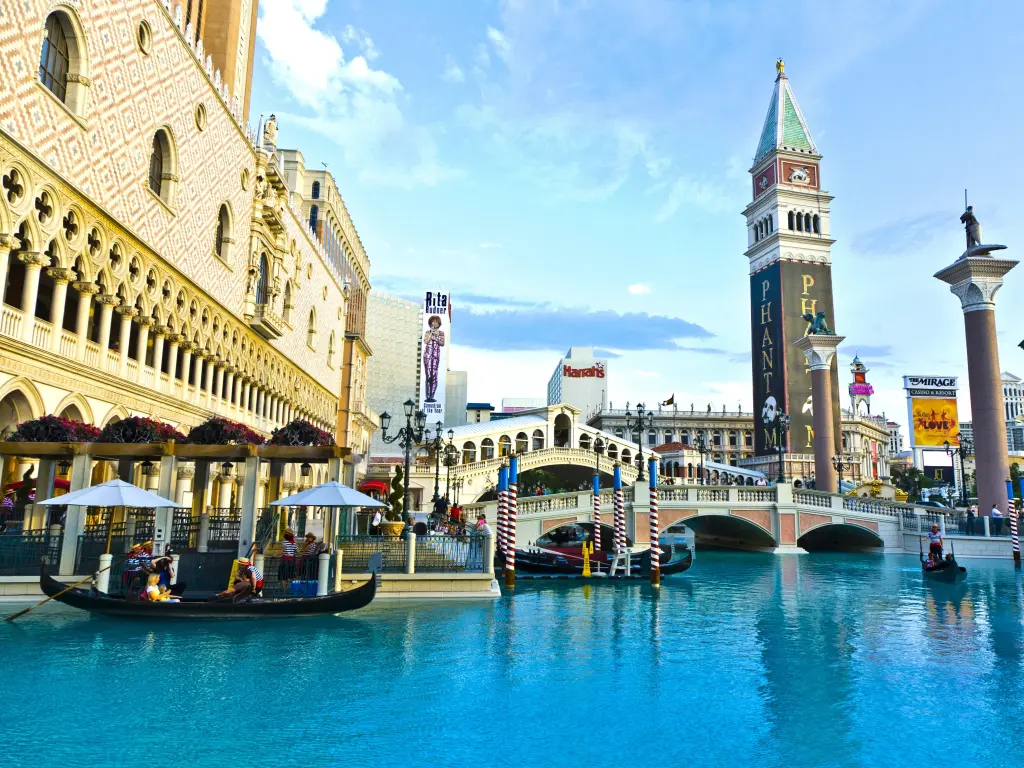
The resort's expansive outdoor swimming pool, surrounded by a spacious sun terrace complete with loungers and parasols, is perfect for relaxing after your drive. The Venetian also features Michelin-starred restaurants offering an array of world-class cuisines.
You'll also love amenities such as a fully-equipped gym, a rejuvenating sauna, and a spa center offering an extensive menu of massages and beauty treatments.
Just steps away, don't miss the Flamingo Wildlife Habitat and the Mob Museum. These are just a few of the amazing highlights nearby that make the Venetian such an amazing place to stay.
Best time to travel from Denver to Las Vegas on a road trip
Although Las Vegas is a year-round destination, each season varies in weather and events. Read on below to learn more about what each season brings to your driving experience.
Traveling to Las Vegas from Denver in summer
During the summer, temperatures often soar above 100 degrees Fahrenheit, especially in desert areas such as Moab, Zion, Las Vegas, and the Grand Canyon. You may experience summer thunderstorms as well.
Make sure to enjoy your outdoor adventures in the early mornings or late evenings. Despite the scorching temperatures, summer is the peak season for tourists, leading to crowded trails in national parks and in Las Vegas.
This means increased traffic and crowded attractions, making early bookings and patience essential. If you are traveling via the Albuquerque Route, the Santa Fe Indian Market in August might mean busy traffic, but its lively atmosphere is worth the extra time spent.
Traveling to Las Vegas from Denver in winter
In winter, you'll experience snowy conditions in mountainous areas and milder, more pleasant weather in the desert regions. Mountain passes might be challenging because of snow and ice, so always check the weather beforehand.
Las Vegas enjoys mild winter temperatures, perfect for city exploration without the extreme heat. Don't miss events like the city's famous New Year's celebrations.
Expect colder weather with potential snow in higher elevations, notably around Flagstaff and the Grand Canyon's North Rim, which closes after the first heavy snowfall. Grand Canyon's South Rim remains open during this season.
Traveling to Las Vegas from Denver in shoulder seasons
The shoulder seasons of spring and fall are ideal. Spring offers milder weather, perfect for exploring the desert before the summer heat sets in, though mountainous regions might still have some snow.
The Moab Jeep Safari in March or April attracts off-road enthusiasts to Moab. Fall brings cooler temperatures, making it an excellent time for outdoor activities with fewer crowds.
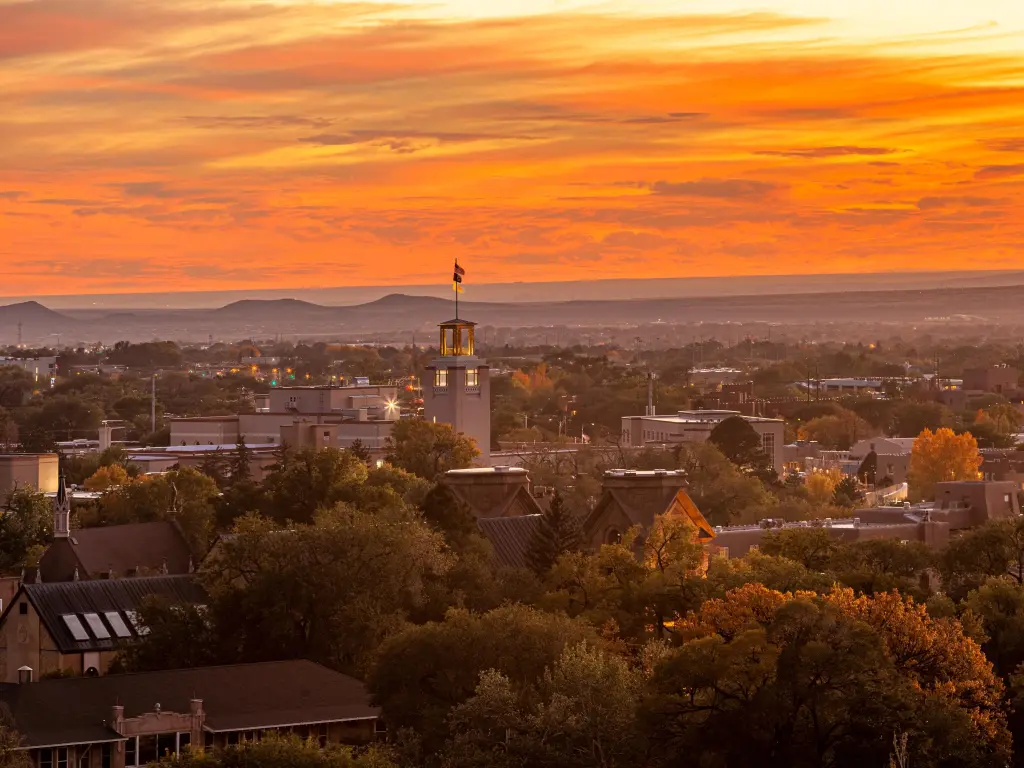
The Grand Canyon is especially beautiful during these times, with comfortable temperatures and fewer visitors. If you're traveling during the fall, don't miss events like the Taos Fall Arts Festival in September.
In Las Vegas, don't miss the Las Vegas Helldorado Days in May. Or, if you're traveling in fall, don't miss the Life is Beautiful Festival in September.
The best things to see and do on a road trip from Denver to Las Vegas
Below are some incredible highlights between Denver and Las Vegas. This way, you can plan your ultimate drive through the American Southwest.
On the Zion National Park Route
Genesee Park, Golden: Genesee Park offers stunning views, hiking trails, and the opportunity to see buffalo and elk herds in their natural habitat.
Phoenix Gold Mine, Idaho Springs: A historic gold mine that offers guided tours where you can learn about the mining history and pan for gold.
Hotel de Paris Museum, Georgetown: This museum preserves the history of a luxurious 19th-century hotel and takes you through Colorado's gold rush era.
Frisco Historic Park & Museum: A collection of historic buildings and artifacts that tell the story of Frisco's and Colorado's mining and pioneer heritage.
Vail: Vail is a mountain resort community with year-round outdoor activities, from hiking and biking in the summer to skiing and snowboarding in the winter.
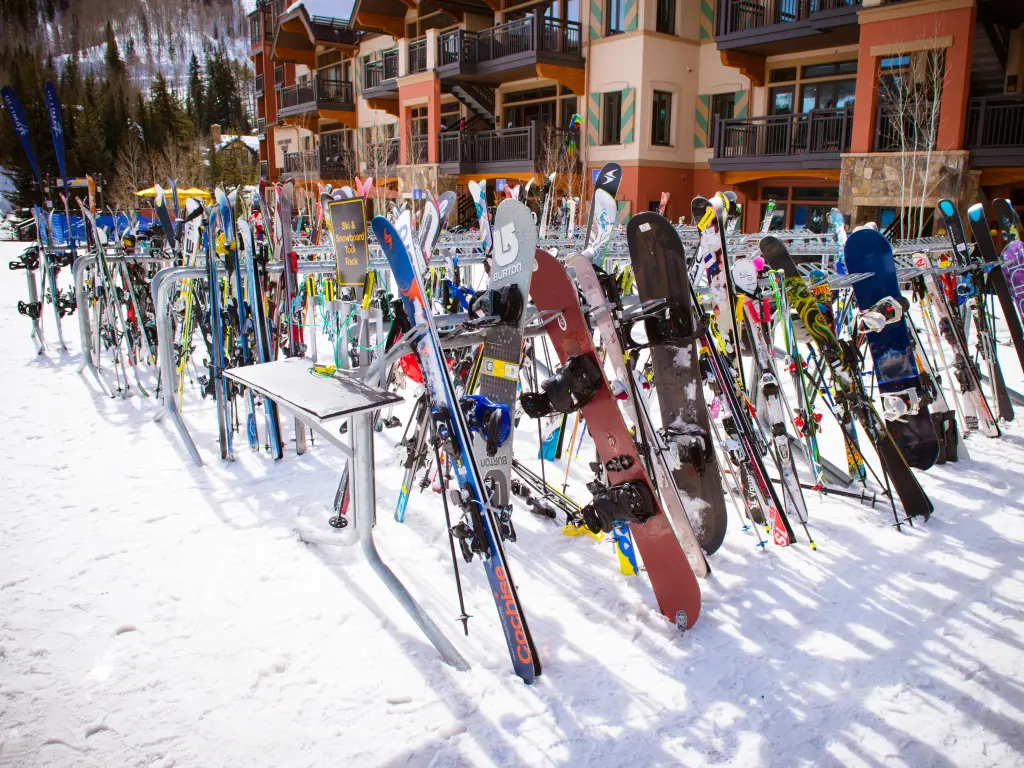
Top of the Rockies Scenic Byway: A breathtaking drive that offers panoramic views of Colorado's Rocky Mountains, with several points of interest along the way.
Hot Springs Pool, Glenwood Springs: One of the largest hot springs pools in the world, offering a relaxing experience with therapeutic mineral waters.
Dinosaur Journey Museum: Features interactive exhibits and real fossils that tell the story of the region's prehistoric past.
Arches National Park: Famous for its natural sandstone arches and unique geological formations, offering numerous hiking trails and viewpoints.
Canyonlands National Park: Offers a dramatic desert landscape carved by the Colorado River, ideal for hiking, biking, and camping.
Moab Rock Shop: A fascinating stop for geology enthusiasts, featuring a wide variety of minerals, fossils, and gemstones.
Mystic Hot Springs, Monroe: A fun town known for its natural hot springs and rustic, hippie vibe.
Dixie National Forest: Encompassing over two million acres, it's the largest national forest in Utah, offering outdoor activities like hiking, camping, and wildlife viewing.
Zion National Park: A majestic park known for its massive sandstone cliffs, narrow canyons, and beautiful vistas, offering some of the most scenic hikes in the United States.
Little Jamaica Natural Swimming Hole: A hidden oasis offering a refreshing stop with its small waterfall and clear, warm waters.
On the Grand Canyon Route
The EDGE Ziplines and Adventures: Offers thrilling zipline experiences and outdoor adventures in a beautiful mountain setting near Denver.
Colorado Springs Pioneer Museum: This museum showcases the history and culture of the Pikes Peak region through exhibits on Native American life, the gold rush, and early Colorado Springs.
Garden of the Gods: A public park known for its stunning red rock formations, offering hiking, rock climbing, and breathtaking views.
El Pueblo History Museum: Highlights the region's diverse cultures and history, from the Native American and Spanish colonial eras through Colorado's statehood.
Taos Pueblo: An ancient living Native American community offering a glimpse into the traditional lifestyle and culture of the Taos people.
The Classical Gas Museum, Embudo: A quirky museum with vintage gas station memorabilia and historical items.
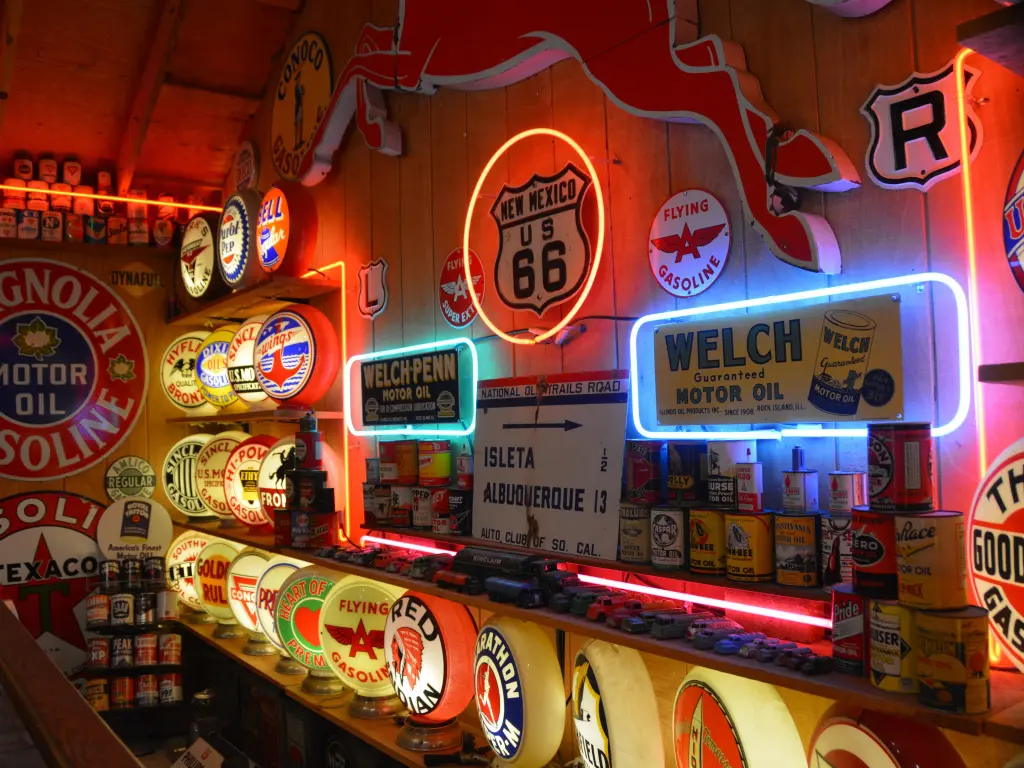
Santa Fe Plaza: The historic heart of Santa Fe, surrounded by adobe landmarks, it's a hub for cultural events, shopping, and dining.
Loretto Chapel: Famous for its miraculous staircase, this chapel is a masterpiece of Gothic architecture and a must-visit historical site in Santa Fe.
Albuquerque Museum: Features art, history, and cultural exhibits that provide insights into the rich heritage of the Southwest.
Route 66 Neon Drive-Thru sign: An iconic symbol of the historic Route 66, offering a great photo opportunity and a taste of Americana.
Petrified Forest National Park: Known for its vast deposits of petrified wood, this park also offers stunning painted desert landscapes.
Dinos of Holbrook: A unique outdoor display featuring large dinosaur statues, celebrating the area's paleontological significance.
Arizona Snowbowl: A year-round mountain resort offering skiing and snowboarding in winter, and hiking and scenic chairlift rides in summer.
Grand Canyon National Park: One of the world's natural wonders, offering unparalleled views, hiking trails, and opportunities for rafting on the Colorado River.
Hoover Dam: An engineering marvel situated on the Colorado River, providing hydroelectric power and water storage while offering tours and spectacular views.

